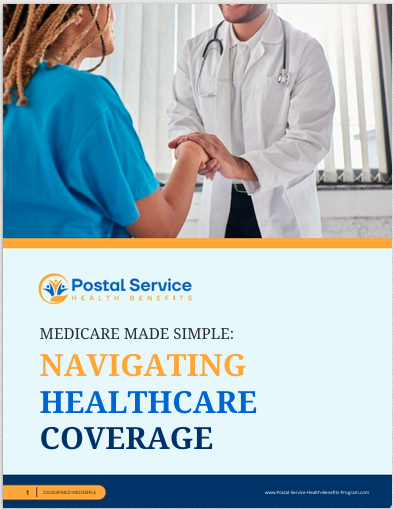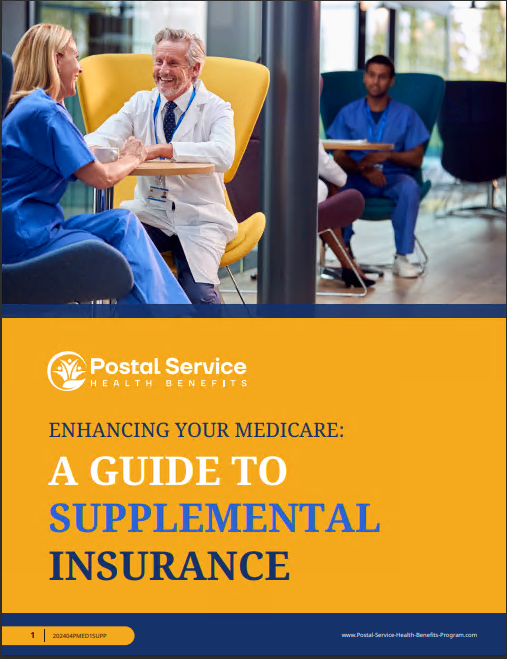Key Takeaways
-
Medicare Part B plays a crucial role in your Postal Service Health Benefits (PSHB) coverage, impacting your out-of-pocket costs, access to healthcare providers, and overall benefits.
-
Enrolling in Medicare Part B at the right time ensures you avoid late penalties and maximize cost-saving opportunities under PSHB.
Understanding How Medicare Part B Works with PSHB
As a Postal Service Health Benefits (PSHB) enrollee, understanding Medicare Part B is essential to making the most of your health plan. Medicare Part B covers outpatient services, doctor visits, preventive care, durable medical equipment, and other essential medical expenses. But how does it interact with your PSHB plan, and what does it mean for your costs and benefits?
Let’s explore the three most important aspects of Medicare Part B that PSHB enrollees need to know, including how it affects coverage, enrollment, and financial planning.
1. The Role of Medicare Part B in Your PSHB Coverage
How Medicare Part B Enhances Your PSHB Plan
Medicare Part B is designed to work alongside PSHB to help reduce out-of-pocket costs and provide access to a broader network of healthcare providers. If you are enrolled in both Medicare Part B and a PSHB plan, your coverage is coordinated, meaning that Medicare pays first for covered services, and your PSHB plan may cover remaining costs.
Some key benefits of having both Medicare Part B and PSHB include:
-
Lower out-of-pocket costs: Your PSHB plan may cover Medicare deductibles, copayments, and coinsurance, significantly reducing your expenses.
-
Access to more providers: Medicare Part B expands your provider options, especially if your PSHB plan has a more limited network.
-
Better prescription drug coverage: Many PSHB plans integrate with Medicare Part D for prescription drugs, reducing costs even further.
-
Enhanced preventive care access: With Medicare Part B, you gain coverage for preventive services such as screenings, vaccinations, and wellness visits at no additional cost.
Coordination of Benefits Between Medicare Part B and PSHB
Understanding how Medicare Part B and PSHB coordinate benefits can help you make informed decisions about your coverage. In most cases:
-
Medicare Part B pays first for outpatient services, doctor visits, preventive care, and medical equipment.
-
PSHB acts as secondary insurance, covering costs that Medicare Part B doesn’t fully pay for, such as copays and coinsurance.
-
You may pay less overall compared to relying solely on a PSHB plan without Medicare Part B.
-
Certain PSHB plans offer additional perks for Medicare enrollees, including reduced premiums or cost-sharing benefits.
2. Enrollment and Avoiding Late Penalties
When Should You Enroll in Medicare Part B?
For PSHB enrollees, enrolling in Medicare Part B at the right time is crucial. You generally become eligible for Medicare at age 65, but timing your enrollment correctly ensures you don’t face late penalties or coverage gaps.
You should enroll in Medicare Part B:
-
During your Initial Enrollment Period (IEP): This is a seven-month window that includes the three months before, the month of, and the three months after your 65th birthday.
-
During the Special Enrollment Period (SEP): If you delay Medicare Part B due to having employer-sponsored coverage, you have an eight-month SEP after leaving employment or losing coverage to sign up without penalties.
-
During the General Enrollment Period (GEP): If you miss your initial window, you can enroll from January 1 to March 31 each year, but late penalties may apply.
What Happens If You Delay Enrollment?
If you don’t enroll in Medicare Part B when first eligible, you may face permanent late penalties. The penalty increases your Part B premium by 10% for every 12-month period you were eligible but didn’t enroll. This penalty applies for life, making timely enrollment critical.
Beyond the financial penalty, delaying enrollment can also result in coverage gaps. If you experience a medical emergency without Medicare Part B in place, you may end up paying significantly more out-of-pocket.
3. Costs and Financial Impact of Medicare Part B
Understanding Your Medicare Part B Premium
In 2025, the standard Medicare Part B premium is $185 per month. However, if your income is higher, you may pay an Income-Related Monthly Adjustment Amount (IRMAA), which increases your premium.
Your PSHB plan does not cover your Medicare Part B premium, so it’s an additional cost to consider. However, some PSHB plans offer Medicare Part B premium reimbursements, helping offset some of the expense.
How Medicare Part B Helps Reduce Healthcare Costs
While paying a monthly premium for Medicare Part B might seem like an extra expense, it often leads to substantial cost savings in the long run. With Medicare Part B and PSHB working together, you can expect:
-
Lower copayments and coinsurance: Medicare covers 80% of approved services, and your PSHB plan may cover the remaining 20%.
-
Reduced out-of-pocket expenses for major treatments: If you require frequent doctor visits, outpatient procedures, or medical equipment, having Medicare Part B means you’ll pay less.
-
Better protection from high medical costs: Since Medicare Part B significantly lowers the amount you pay out-of-pocket, you can avoid unexpected medical bills.
-
Comprehensive long-term care planning: Enrolling in Medicare Part B ensures predictable healthcare costs, making financial planning easier for retirement.
Making the Right Choice for Your Healthcare Needs
If you’re a PSHB enrollee approaching Medicare eligibility, understanding how Medicare Part B fits into your health coverage is key. Enrolling at the right time, coordinating benefits effectively, and considering your financial situation will help you maximize your healthcare coverage and minimize expenses.
Making an informed decision now can protect you from unexpected medical costs and provide peace of mind in the future. Take time to explore your options, compare benefits, and determine the best approach for your healthcare needs.
Next Steps: If you need assistance with Medicare Part B enrollment or understanding how it works with PSHB, get in touch with a licensed agent listed on this website. They can help you review your options and ensure you have the best coverage for your needs.







